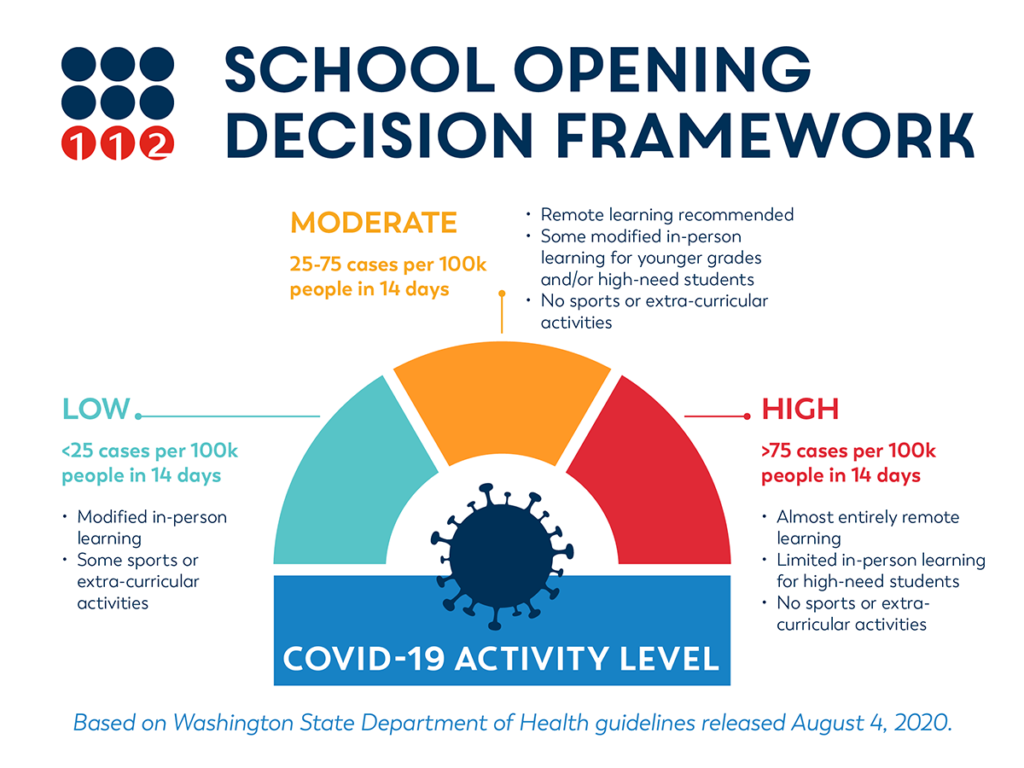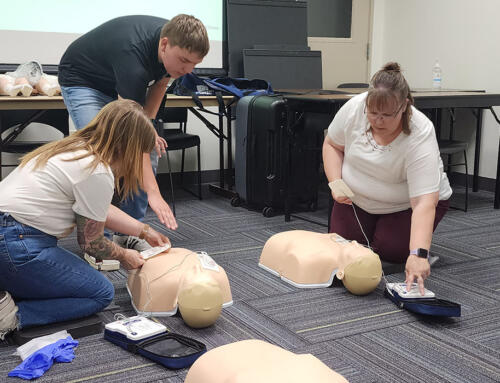New Department of Health metrics indicate Clark County is on the high end of the moderate COVID activity category and should begin the school year in remote learning.
Gov. Jay Inslee, Superintendent Chris Reykdal and the state Department of Health (DOH) announced a “decision tree” framework to help school districts determine how to resume learning this fall. The framework emphasizes that community transmission must be low in order for schools to reopen safely for in-person learning.
Clark County Public Health reports that there were 74.3 newly diagnosed cases per 100,000 people over 14 days, indicating that Clark County is on the high end of the moderate COVID-19 activity level category, based on the state’s new framework. At this level, DOH recommends a remote learning start to the school year with a gradual expansion to in-person learning, prioritizing in-person learning in small groups of students with high needs, and elementary students.
Last week, eight Clark County school districts recommended to their respective school boards that they start the school year in remote learning model. This decision is consistent with DOH’s new metrics. The eight school districts recommending remote learning include: Battle Ground, Camas, Evergreen, Hockinson, La Center, Ridgefield, Vancouver, and Washougal.
“Schools are not islands, meaning virus transmission in a school will spread into the community, just as transmission within the broader community will make its way into schools,” said Dr. Alan Melnick, Clark County’s Public Health director and county health officer. “Clark County school leaders made the appropriate recommendation to start schools remotely and this recommendation is supported by the state’s new metrics, as well as Clark County Public Health.”
DOH’s “decision tree” framework offers metrics based on three COVID-19 activity levels:
- >75 cases per 100,000 in 14 days is considered a high COVID-19 activity level for a community.
At this level, DOH recommends distance learning with the option for limited in-person learning for students who need it most – such as children with disabilities. Sports and extracurricular activities should remain on pause. - 25–75 cases per 100,000 in 14 days is considered a moderate COVID-19 activity level.
At this level, DOH recommends distance learning as described above, with gradual expansion to in-person education, beginning with elementary students. Younger students under the age of 10 benefit the most from in-person learning while also posing less risk for transmitting COVID-19 than older students. Most sports and extracurricular activities should remain on pause. - Below 25 cases per 100,000 in 14 days is considered a low COVID-19 activity level.
At this level, DOH recommends full-time in-person learning for all elementary students and hybrid learning for middle and high school, eventually moving to in-person for middle and high school.

School district leaders will continue to collaborate with their local health jurisdictions regarding the number of cases in their communities and when it is safe to gradually expand to in-person education, as is recommended for areas at the moderate COVID-19 activity level.
“Our ultimate goal is to get students back in the classroom, but we must do so safely, using the best available health and science data and expert guidance,” said Vancouver Public Schools Superintendent Steve Webb. “Until that time, we will engage students in a thoughtful, robust and accountable remote learning model.”
Individual school districts will share more specific and detailed information about their remote learning plans in the coming weeks.




 ESD 112 equalizes educational opportunities for learning communities through innovative partnerships, responsive leadership, and exceptional programs.
ESD 112 equalizes educational opportunities for learning communities through innovative partnerships, responsive leadership, and exceptional programs.